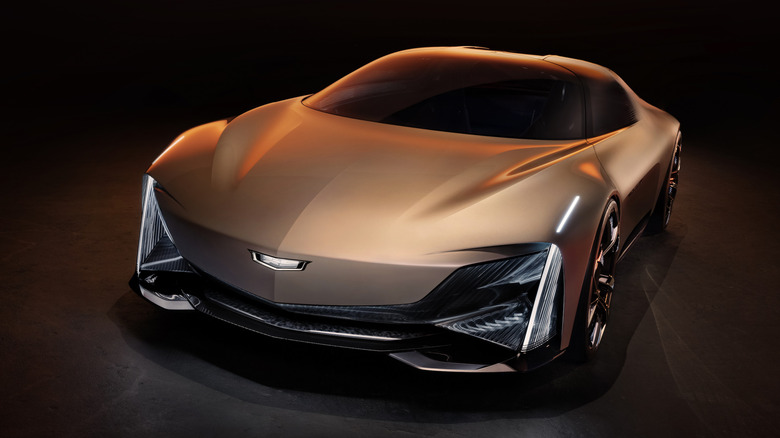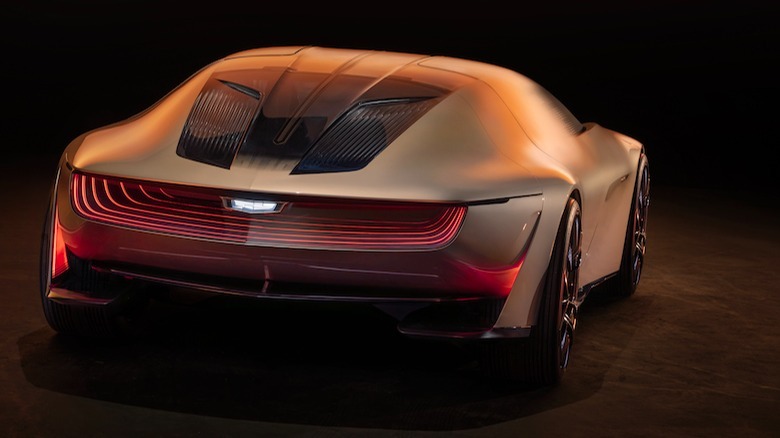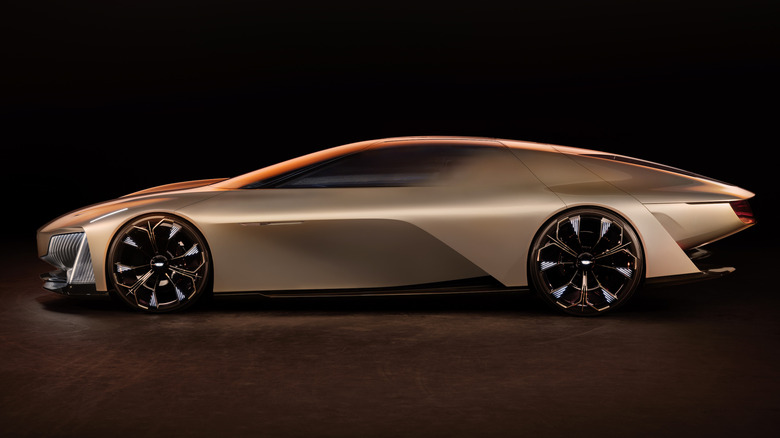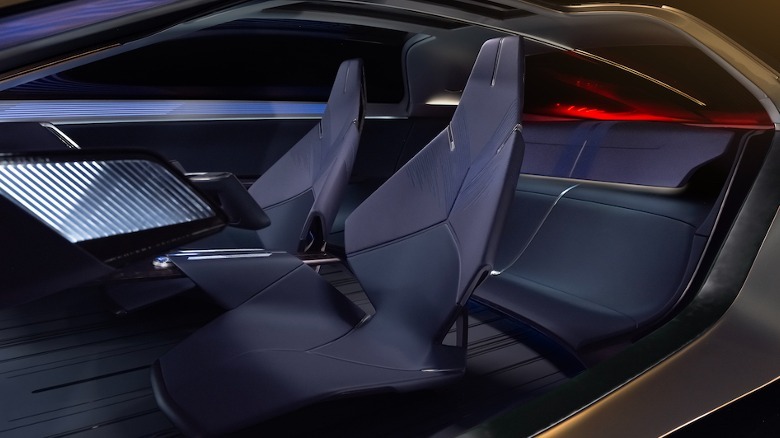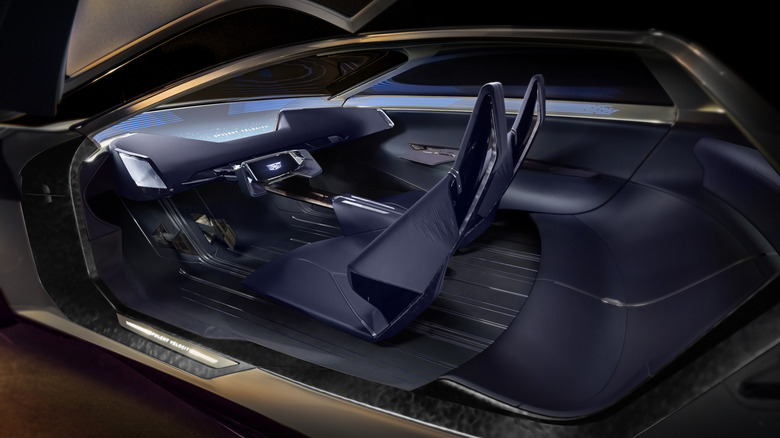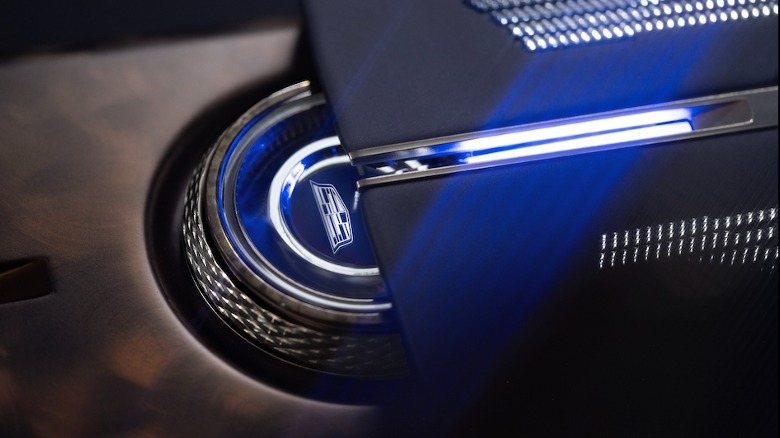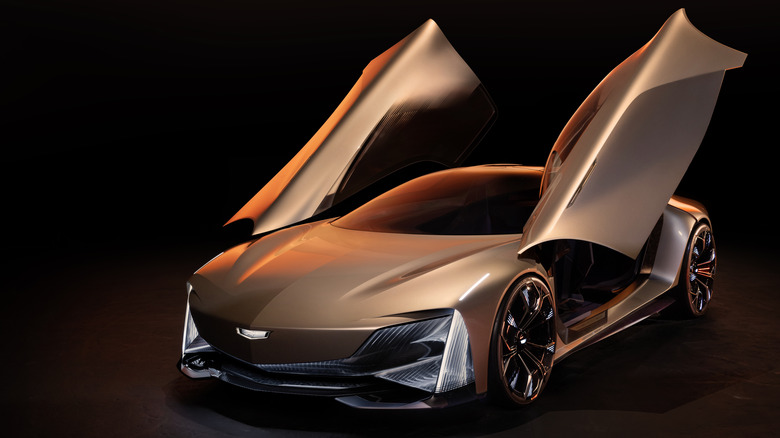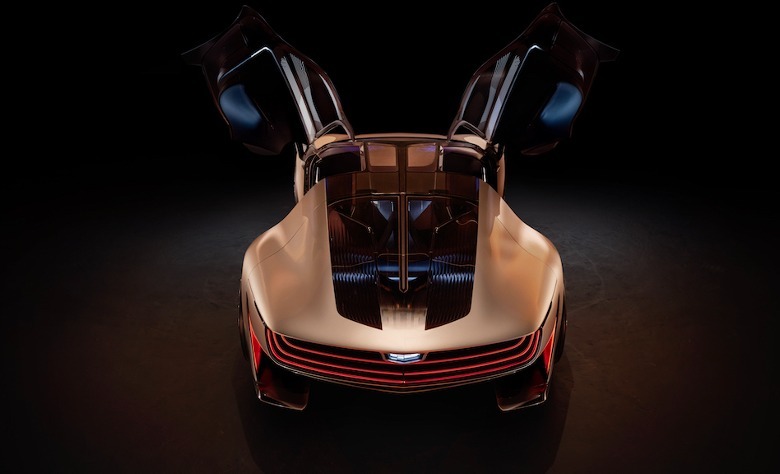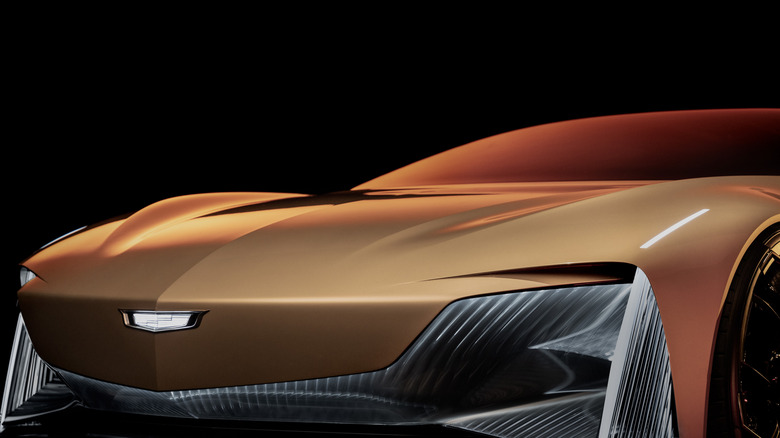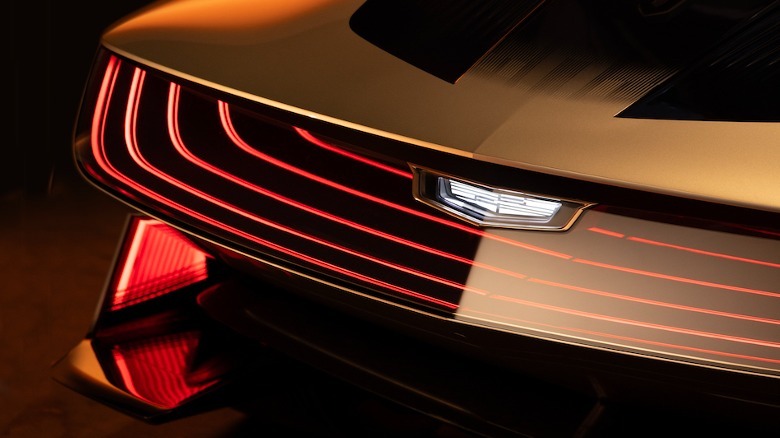Cadillac Reveals The Future Of The V-Series Brand, And It's Electric
Cadillac loves a futuristic concept, and the Cadillac Opulent Velocity leans into the automaker's longstanding obsession with American luxury that doesn't compromise on performance. Revealed at Monterey Car Week 2024, the new concept coupe flirts with a duality that Cadillac says epitomizes its owners. On the one hand, their desire for speed — on the other, an unwillingness to sacrifice creature comforts to achieve it.
The result is a 2+2 coupe with large, upward-swinging doors and dramatic proportions. Apparently inspired by motorsport, with short front overhangs and a lengthy tail, it avoids too many crease lines and sharp edges in favor of smooth surfaces and the use of light as a design element as much as a practical one.
The familiar upright front and rear light signature is present, but paired with a new body-color grille shield. That's surrounded by fluted glass pinstripes, casting shadows and reflections across the sculpted cut-outs and scoops. At the rear, the lamp clusters reflect into the belly pan, while an "infinity lens" encapsulates a floating Cadillac logo.
Beautiful, not brutal
It's not the first take on an electric hypercar, of course, and Cadillac's concept lags well behind the production models some automakers — albeit generally niche — are already delivering. Where the Rimac Nevera and Pininfarina Battista look like creatures of the track, though, the Opulent Velocity scales back some of the obvious aggression.
"It doesn't have to be brutal," Bryan Nesbitt, executive director of Global Cadillac Design, said of the new concept ahead of its Monterey debut. Performance, such as from production models like the CT4-V Blackwing, is more than just 0-60 mph times, Nesbitt argues. Indeed, Cadillac V-Series buyers don't always want their ride to be a wild sports car.
That's particularly clear inside the Opulent Velocity. The seats are lightweight — both visually and physically — with a saddle design for those at the front which spans the cantilevered, Y-shaped center console. That flows into the wraparound instrument panel, and then in turn, into the doors. The result is comfortable, Nesbitt says, but will also "hold you and hug you in that high speed performance mode."
A choice of speed or luxury
In addition to a full windshield head-up display, there's a screen integrated into the small, yoke-style steering wheel. Cadillac has used two-toned embroidery and 3D printed components with rear light projection, experimenting with low-volume production options as we've already seen feature in the six-figure Celestiq electric flagship.
Pride of place is given to the drive mode knob, a physical shifter to switch between Opulent and Velocity configurations. In the former, a relaxing sound and light show includes curated art, massage, and more, taking into account the driver's circadian rhythms as well as other metrics. Meanwhile, the concept would be piloting itself, Cadillac envisages, with Super Cruise upgraded to Level 4 autonomous driving.
Notch over to Velocity mode, meanwhile, and the steering wheel and pedals present themselves for active driving. The AR windshield can show a "ghost car" against which eager track drivers can pace themselves, while the steering wheel display unlocks control over the drivetrain and chassis.
The technology isn't ready yet
As you might expect, Cadillac isn't saying much about production cars here. Indeed, Opulent Velocity is built as much on future technology assumptions as it is on current design principles.
The electric V-Series drivetrain is some imagined iteration beyond the current GM Ultium platform. Cadillac says it's studying future energy storage and cooling tech, which would be necessary to give such an EV a suitable battery pack. Meanwhile, the capabilities of Super Cruise — as envisaged in the concept's Opulent Mode — are far from ready.
As we've seen plenty of times before, Cadillac's ability to craft a stunning concept doesn't necessarily mean anything for production. It's hard not to see yourself as Charlie Brown, and Cadillac as Lucy, in fact: Teasing us with alluring sheet metal, but then yanking it away at the very last minute. You don't even have to go far back to see examples of that. The glorious Sollei concept last month dangled droptop electric splendor before our hungry eyes, but with nothing more in the way of commitment than a vague "explores the possibilities" justification.
That familiar Cadillac waiting game
For its part, Cadillac is eager to avoid any accusations that the Opulent Velocity concept is entirely a lust-inspiring bait-and-switch. Just as Celestiq is intended to lean back into "the glory of the automobile business," Nesbitt says, this concept coupe is an exploration of what a new halo atop Cadillac's lineup might look like. One that, Nesbitt suggests, shows "the highest integration — artful integration — of technology, performance, and luxury."
If there's any reason to have faith, it might well be Cadillac's proven success with the V-Series. Celebrating its 20th anniversary in the 2024 model year, the performance-centric sub-brand apparently brings in younger, more affluent, and more educated buyers than the rest of the Cadillac lineup. Those shoppers are typically conquest sales from rivals — as high as 80%, Brandon Vivian, executive chief engineer for Cadillac, says — and have a high likelihood of going on to make multiple purchases.
In short, while you shouldn't hold your breath to see Opulent Velocity at your nearest Cadillac dealership any time soon, some broad-stroke hints from the concept may be headed to production models. Think the surface vocabulary of the exterior, Nesbitt suggests, and the way technology is integrated, even if the butterfly doors, floating seats, and self-driving magic don't quite make it.
